SBVR Diagrams: A Response to an Invitation
Introduction
In the April 2008 issue of the Business Rules Journal we can read: "It has been said by different experts that "SBVR is a landmark result in the evolution of business rules and business modeling,"[5] "a major breakthrough in productivity in requirements and knowledge management,"[6] "SBVR provides the foundational bridge component that has been missing since computers began to be used in organizations in the 1950s,"[2] "An important threshold … for our industry,"[8] and a "groundbreaking new standard."[1] An SBVR-compliant language could be a controlled natural language.[9] [10] In [3] Terry Halpin describes how the textual description for certain rules can be generated from the diagrams.
There is nevertheless a lot of work ahead of us before SBVR is in the proximity of becoming as common as using Word. We have been giving intensive multi-day SBVR workshops, and in this column we will share with you the experiences of these workshops. Persons attending the workshops almost without exception turn negative on SBVR when they start to read Clauses 8 through 12 of the specification.[7] It subsequently takes enormous amounts of energy to demonstrate the many positive aspects of SBVR. In this column we will describe SBVR in a way that is both tutorial and rigorous — both understandable and formal. Wasn't that a major goal of SBVR in the first place?
In Annex A of the SBVR specification, section A.6.4.2, we read:
"It should be remembered that SBVR Structured English (presented in Annex C) is just one of possibly many notations that can be used to express the SBVR Metamodel, and, as a notation, is nonnormative in the SBVR standard. Indeed, additional compliant notations are welcomed and encouraged." (emphasis added by the authors).
There are indeed much better ways of describing the core aspects of SBVR. We are happy to describe what we have experienced as the most productive in business practice, well-tested diagrammatic notation of SBVR. It is our experience that consistent use of a diagrammatic framework helps people understand the total coherence and see the strong points of SBVR for practical applications.
In this paper the authors — who are fluent in various compliant SBVR notations — compare the strengths and weaknesses of two different SBVR notations, namely the text based Structured English notation and the CogNIAM diagrammatic notation.
As it is our experience that the productivity of communication about SBVR can be substantially increased by using concrete illustrations at the ground fact level, expressed in the preferred notation of the speech community, we do the same here.
Starting point is the use case text given below in Table 1:
Table 1. Use case text
"EU-Rent is a (fictitious) car rental company with branches in several countries." [7] For each city branch the amount of opening hours per day is registered. Customers renting a car from an airport branch often request the distance to a nearby city center from that branch. For certain airport branches therefore the distance to one or more city centers in the immediate neighborhood is registered. It is possible to pick up a car at a specific branch and drop off the car at another branch. For each branch used for these kinds of transfers, the distance to one or more other branches is registered. Each branch is either a city branch or an airport branch, never both. No city branch has the same name as an airport branch.
An important and so far unique part of the CogNIAM business process specification procedure is to develop concrete examples of the level of ground facts expressed in the preferred notation of the specific speech community. This will be the subject of a future column. For now we present the results of that part of the specification procedure as shown in Figure 1.
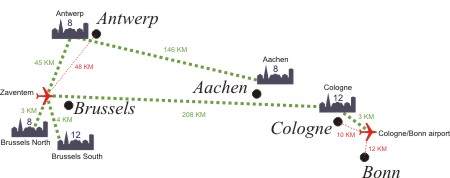
Figure 1. Ground facts represented in the preferred notation of the EU-Rent speech community
One of the sub-procedures in the CogNIAM procedure is to produce an effective legend as a binary. The first part of each pair is some element of the representation in the preferred notation of the specific speech community; the second part is its verbalization as expressed in natural language facts. Hence this can be considered as a prescription for how to specify a legend. The legend for Figure 1 is given in Table 2.
Table 2. Legend for the facts represented in Figure 2

Aachen identifies a specific city. 
Zaventem identifies a specific airport branch. 
Brussels South identifies a specific city branch. 
The distance between airport branch Zaventem and the city center of Antwerp is 48 kilometers. 
The distance between airport branch Zaventem and city branch Cologne is 208 kilometers. 
City branch Cologne has an amount of opening hours of 12 per day.
The SBVR Structured English notation for this use case is presented below (in alphabetical order):
Noun Concepts
Noun concepts assumed known
The following are terms for concepts used in SBVR Structured English definitions below that are taken to be understood, without explicit definition, as part of everyday language:
![]()
Reference source:  (Merriam Webster Unabridged Dictionary).
(Merriam Webster Unabridged Dictionary).
Note: name and number are also used; they are defined within SBVR.
Owned Noun Concepts
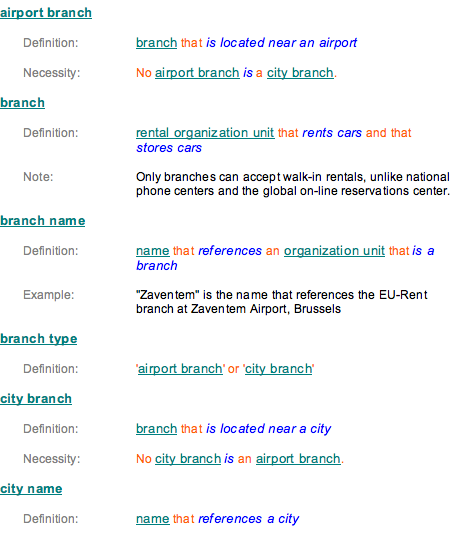
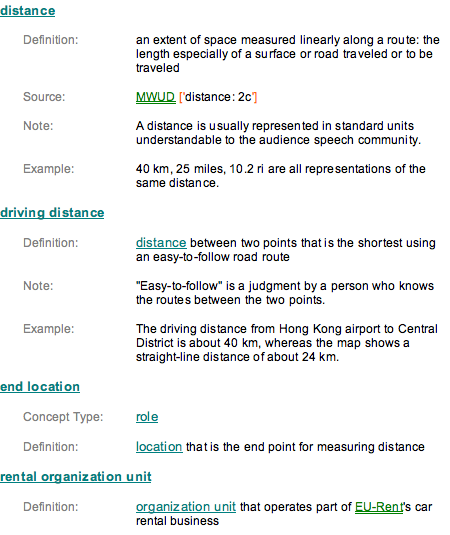

Verb Concepts (Fact Types)
Characteristics (unary fact types)
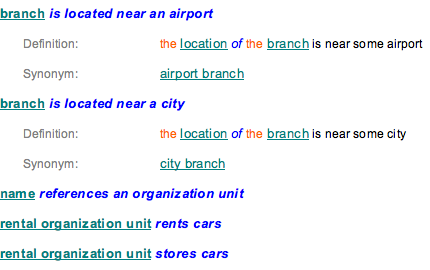
Multi-role Fact Types
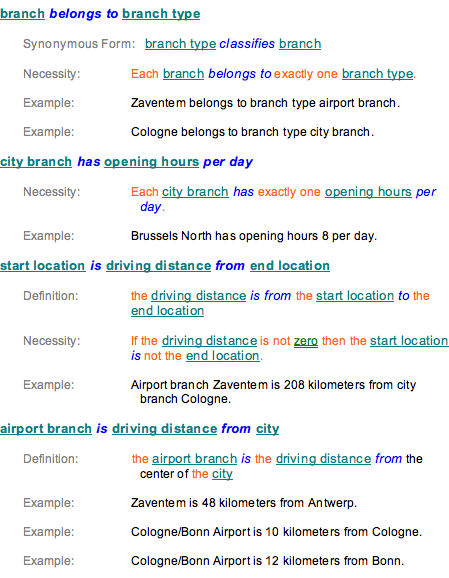
In Figure 2 the CogNIAM diagrammatic notation is given for the fact types, fact type forms, and rules.
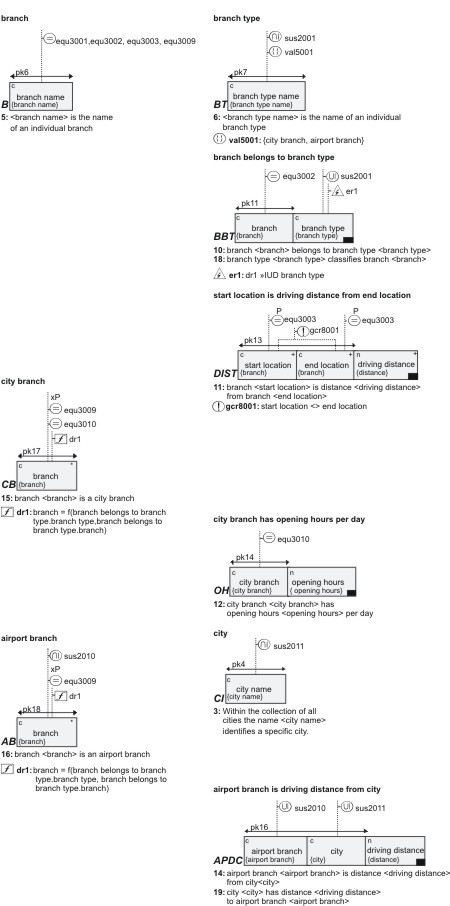
Figure 2. Diagrammatical representation of the relevant fact types, fact type forms, and rules except rental organization unit and its unary fact types
Comparison of two SBVR notations
Let us now compare these two SBVR compliant notations. Let us discuss a concrete example. In Figure 2 we can immediately see that role 'start location' of the fact type with fact type code DIST is involved in the following 4 rules:
- Role 'start location', together with role 'end location', is part of the primary uniqueness constraint pk13; this is the expression of a necessity that for each population value of the fact type DIST there is never more than one identical combination of 'start location' and 'end location' values in a fact population;
- The union of role 'start location' and role 'end location' is equal to the object type 'branch'; this means there is a necessity that each value of role 'start location' and of role 'end location' in any fact of fact population DIST is an element of the set of values of role 'branch name' of the fact type with fact type code B (equality rule equ3003 in Figure 2);
- The value of the role 'start location' is never equal to the value of the role 'end location' in the same ground fact, and
- The value of role 'start location', 'end location' and 'driving distance' can be (partially) derived from the value of 'end location', 'start location' and 'driving distance' (the + signs in the three roles of fact type DIST in Figure 2). Explanation: given the distance between a given combination of locations 'A' and 'B', the distance between 'B' and 'A' can automatically be deduced.
Hence we see that all rules pertaining to a given role are presented in one position.
PNA Group had a team of very experienced analysts go through Clauses 8 through 12. It was their estimate that the time they had to invest to go through the text jungle was many times more than the time they would have needed if for Clauses 8 through 12 the above described compliant diagrammatic notation had been provided as a service to the SBVR tool developers' and training developers' community. They believe that it would have cost them less than 20 percent of the time actually taken, had they been given the compliant diagrammatic notation. If that were extrapolated to all other uses of SBVR sizable profits could be realized.
Learning curve
The high productivity of the diagrammatic notation can only be achieved after learning the meaning of the "traffic signs" of this notation. For somebody who understands the core concepts of SBVR or the core concepts of fact orientation this is an investment of less than one hour. The subsequent return on that investment is very high if used in business practice, as second nature when analyzing a situation or preparing for or performing business communication.
Productivity
The diagrammatic notation is a much better notation for the combination of fact types, fact type forms, and rules. In the diagram all these aspects are clearly related. Furthermore, in the associated alphabetically ordered concept descriptions, it is fairly easy to look up a concept definition.
It was PNA Group's experience that it took several fact-modeling experts many hours to completely analyze Clauses 8 through 12. Had this knowledge been available in the diagrammatic notation discussed in this paper with the associated list of concept definitions, it is estimated that the investment to check the consistency and completeness of Clauses 8 through 12 would have been less than 20% of what it actually was, due to the low productivity of text. This advantage is of course relevant for all knowledge described in SBVR.
Another advantage of the diagrammatic notation is that structural rules that "restrict" a given role are represented with that role. In SE it is possible to do this by including 'necessity' clauses in concept definitions. However, it is also possible to define free-standing structural rules that affect a concept, so there is a need to scan all of the textual notation to ensure that a concept is fully understood. The diagrammatic notation can support a significant productivity gain compared with SE.
Another advantage of the diagrammatic representation is that obviously missing rules of necessity can easily be detected. E.g., a missing primary uniqueness is spotted immediately.
Speech community orientation
Business people generally like the SBVR SE notation very much. PNA Group's experience is that initially they are really turned off by the diagrammatic notation. After a while some start to wonder how the business analyst using the diagrammatic notation can be so productive. Some conclude from this observation it is a good thing to start using the more productive diagrammatic notation.
Various fact type forms in one fact type diagram
Another advantage of the CogNIAM diagrammatic notation of SBVR can easily be seen from the following example taken from [4].
Multiple Fact Symbols Expressing One Verb Concept Form
• One Verb Concept Form (e.g., Sentential Form)
driver's license expires on date
can be expressed in many language, notation, and speech community combinations:
— Expressed in English
— Expressed in French
— Expressed in SBVR Structured English
— Expressed in ORM ("Object Role Modeling" notation)
All these fact type forms associated with the fact type shown above can be coherently expressed in one CogNIAM diagrammatic notation as follows:
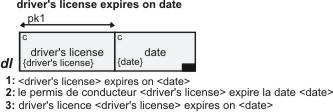
Figure 3. Diagrammatical representation of fact type "driver's license expires on date" using CogNIAM notation
All three fact type forms belong to the same fact type; this shows the coherence of the fact type and all its associated fact type forms and rules very clearly.
Conclusion
In the SBVR 1.0 specification the invitation is given to develop SBVR compliant languages. We believe there is room for at least two classes of languages, text based and diagrammatic. Each has its specific purpose. In this article we have compared two compliant languages. For certain people text is better; others will prefer the diagrammatic language. SBVR gives the freedom to choose — including both at the same time.
References
[1] Anderson Healy, Keri, "Special Report on SBVR," Business Rules Journal, Vol. 9, No. 3 (March 2008), ISSN: 1538-6325. ![]()
[2] Chapin, Donald, "SBVR: What is now Possible and Why?" Business Rules Journal, Vol. 9, No. 3 (March 2008), URL: http://www.BRCommunity.com/a2008/b407.html![]()
[3] Halpin, Terry & Tony Morgan, Information Modeling and Relational Databases, March 2008, ISBN: 978-0-12-373568-3. ![]()
[4] Hall, John, "Semantics of Business Vocabulary and Business Rules (SBVR)," presentation at the BPM Think Tank, Arlington, VA, 23 May 2006 . ![]()
[5] Hendryx, Stan, "OMG Business Rules Proposal Nears Completion," Business Rules Journal, Vol. 6, No. 2 (Feb. 2005), URL: http://www.brcommunity.com/a2005/b226.html![]()
[6] Nijssen, Sjir, "SBVR: Semantics for Business," Business Rules Journal, Vol. 8, No. 10 (Oct. 2007), URL: http://www.BRCommunity.com/a2007/b367.html![]()
[7] OMG, Semantics of Business Vocabulary and Business Rules (SBVR), v1.0, Object Management Group (Jan. 2008). Available as document 08-01-02 at http://www.omg.org/spec/SBVR/1.0/PDF.
SBVR 1.0 and supporting files are available at http://www.omg.org/spec/SBVR/1.0/![]()
[8] Ross, Ronald G., "The Emergence of SBVR and the True Meaning of 'Semantics': Why You Should Care (a Lot!) ~ Part 1," Business Rules Journal, Vol. 9, No. 3 (March 2008), URL: http://www.BRCommunity.com/a2008/b401.html![]()
[9] Sowa, John F., "Fads and Fallacies about Logic," IEEE Intelligent Systems, 22:2, pp. 84-87, (March 2007), URL: http://www.jfsowa.com/pubs/fflogic.htm![]()
[10] Vanthienen, Jan, "SBVR: The ABCs of Accurate Business Communication," Business Rules Journal, Vol. 9, No. 3 (March 2008), URL: http://www.BRCommunity.com/a2008/403.html![]()
# # #
About our Contributor(s):
Online Interactive Training Series
In response to a great many requests, Business Rule Solutions now offers at-a-distance learning options. No travel, no backlogs, no hassles. Same great instructors, but with schedules, content and pricing designed to meet the special needs of busy professionals.















